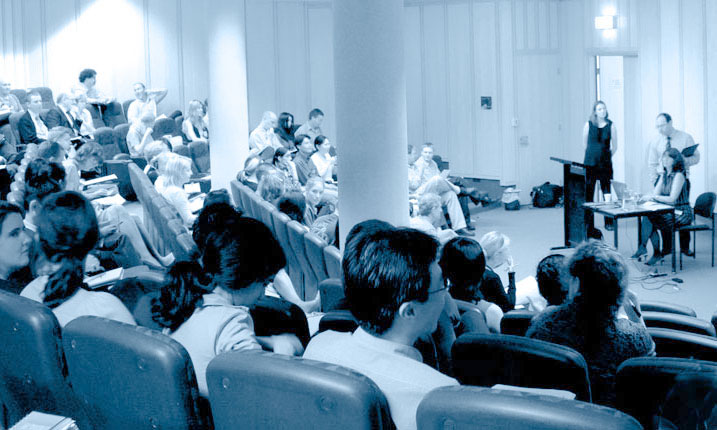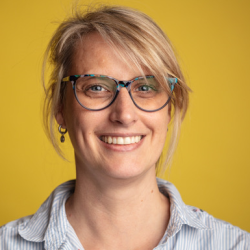The role of extracellular matrix signalling in blood vessel development and disease
Date
Time
@ -
About the talk: Our blood vessel system is an extremely complex network consisting of distinct vessel types including arteries, capillaries and veins. These different vessel beds also experience local environmental cues that drive tissue specific vascular network through organotypic differentiation. Transmembrane integrin heterodimers formed by a-and β-subunits are the major adhesion receptors that reside at the endothelial cell-matrix interface and interpretenvironmental cues. Upon ligand binding integrins undergo a conformational change and reorganise into activated clusters called Focal Adhesions (FAs) that provide a physical connection between the intracellular acto-myosin machinery and the ECM. The connection to acto-myosin is established by integrin adaptor molecules, including talins. By utilising the live imaging capacity of the zebrafish we have examined how FAs, controlendothelial cell (EC) dynamics in live flow pressured vasculature. To do this, we generated a zebrafish mutant, deficient for the integrin adaptor protein Talin1. Loss of FAs in talin1 mutants, leads to compromised F-actin rearrangements, which perturb EC elongation and cell-cell junction linearisation during vessel remodelling.Chemical induction of actin polymerisation can restore these cellular phenotypes, suggesting a recovery of actinrearrangements that are sufficient to allow cell and junction shape changes. We have further explored how tissue specific ECM signals can underlie susceptibility to a vascular disease called Cerebral Cavernous Malformations (CCM, cavernoma). CCM is a disease whereby focal clones of defective ECs give rise to distinctive bulging vascular lesions. Underlying the formation of these expanded and fragile lesions are a discrete set of cellular defects, including reduced cell-cell adhesion, cellular thinning and cells spreading. It is currently not understood why CCMs develop specifically in brain vasculature. To study this, we utilised our model of 3D bioengineered vasculature and identified that in the CCM microenvironment HyaluronicAcid homeostasis is perturbed. By growing 3D tubes in ECMs containing distinct forms of HA we further showed that modifying HA content alters CCM outcome.
Speaker
-
Dr Anne Lagendijk
The University of Queensland
Anne Lagendijk did her undergraduate studies (MSc degree in Biomedical Sciences) at the Radboud University Nijmegen (the Netherlands). As an undergraduate Anne developed a lasting fascination with Developmental Biology, working in the labs of Prof. Peter Koopman (Institute for Molecular Bioscience, Brisbane)on ovarian specification and with Prof. Ronald Plasterk (Hubrecht Institute, Utrecht, the Netherlands) …Anne Lagendijk did her undergraduate studies (MSc degree in Biomedical Sciences) at the Radboud University Nijmegen (the Netherlands). As an undergraduate Anne developed a lasting fascination with Developmental Biology, working in the labs of Prof. Peter Koopman (Institute for Molecular Bioscience, Brisbane)on ovarian specification and with Prof. Ronald Plasterk (Hubrecht Institute, Utrecht, the Netherlands) on microRNAs that control pancreas development. For her PhD training Anne stayed at the Hubrecht and joined the lab of Prof. Jeroen Bakkers. She identified novel regulators that control Hyaluronic acid homeostasis in the ECM of the developing zebrafish heart. These factors were proven to be essential for cardiac valve formation. After completing her PhD, Anne relocated to the IMB/UQ in 2012 to work as a UQ Postdoctoral fellow in the lab ofProf. Ben Hogan. She initiated a project studying mechanotransduction and endothelial cell-cell junctions in vivo, in collaboration with the lab of Prof. Alpha Yap. She generated the first vertebrate FRET tension biosensor as part of this work. She further continued her interest in Hyaluronic acid signalling and, in collaboration with the lab ofA/Prof Kelly Smith, identified that the hyaluronidase Tmem2 is required for sprouting angiogenesis in vivo. Anne now leads her own lab at the IMB since 2019. Her team uses both zebrafish and 3D human micro-vessels to study endothelial cell adhesion and mechanics.


